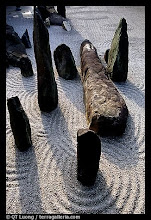The kitchen area is coming along nicely with the whole thing planned around a cast 'crete sink. Appliances were bought first to be sure of final dimensions and a late decision to use a porcelain top off of an old Hoosier style cupboard shortened the length of top to build by about four feet. The narrow 20" wide stove (that the punk kid at Home Depot insisted didn't even exist) placement gave me the dimension for a short butcher block top over to the wall and the window placement informed me of what was left of the wall. The resulting wall yielded close to 60" of counter space to fill with the concrete top giving us a single bowl sink centered beneath the window and a integral drainboard to the left. The grey water lines preclude using a disposal - have never been a big fan of flushing good compost material down the sink anyways. We first built the legs to support it out of galvanized 1" pipe using wall and floor flanges, the same pipe was used as a base under the porcelain top. Formwork for the concrete was built across the living room up on legs so that when we flipped over the final form it would be as the same level as the top and we wouldn't have to do any lifting. Smooth MDF board was used as formwork and then we caulked all the corners for a nice eased edge and heavily varnished it all to seal it from the wet concrete. The trickiest part of the whole affair was wrapping my brain around and then building an upside down drainboard and sink form with leave-outs for all the drain basket parts. This is hardly new technology; other people are masters at this but this was only our second foray into the alternative universe of the concrete countertop. A good article from Fine Homebuilding gave some direction as to methods and tips but as usual winging it is in my DNA. I used an acrylic plasticizer and dark charcoal colorant mixed with three and a half 80 lb. sacks of ready mix. The concrete was reinforced with a birdcage made of wired 4x4 hardware cloth. The local mix of sacrete is aggregated (is that a word?) with limestone chips so it made for a nice contrast with the darker matrix; a nice grog to background ratio.
According to experience a drier mix yields the strongest product, but against my better judgement for flow-ability, we went with a dry enough slump to make firm softball shaped lumps straight out of the wheelbarrow. Lots of tamping, screeding with a 1x2, form tapping with our trusty lead shot mallet and vibrating with an orbital sander (w/ no sandpaper) against the sides brought the concrete to level and all the water migrating to the top suggested a nice settlement of the mud into the form's nooks and crannies. It set for an entire week curing while I worked on other projects. Alas. The much anticipated form stripping unveiled a ton of dry spots, pits, and minor honeycombs. So much for that dry of a mix. Should have used a little more water to get it to flow but the darn thing literally rings it is so stout. We procrastinated worrying over the final finish until it was installed. I added ski rails to the form table and then used PVC pipe rollers to move it egyptian style across the room. 2x4 levers, stacks of gradually removed blocking and a floor jack eased it over and down where it belonged, with nary a busted toe or broken corner. The sink was rubbed and plastered with a thin slurry of more concrete sifted to remove any aggregate and colored extra dark hoping that the filled spots would add more visual contrast. It worked effectively but we wish it had been a smoother finish straight out of the form. After letting it dry overnight the entire sink was sanded with sanding blocks and 80 grit followed by 150, 220 on the orbital sander and a hand polishing with wet/dry 800 emory cloth. It has been sealed three or four times and then waxed by hand. The water bounces off of it and the surface looks like honed lava rock. A helluva lot of work make no mistake, but with the copper spout, and antique brick window sill for fresh herb growing it is the center of attention in the whole room.



No comments:
Post a Comment
constructive comments or serious questions and inquiries are welcome.